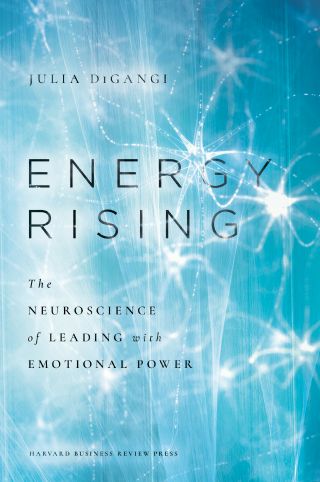Neuroscience
How to Utilize Emotional Pain to Leverage Emotional Power
New research shows how the brain can learn to harness emotions.
Posted October 26, 2023 Reviewed by Michelle Quirk

In the medical community, it is well-accepted that physical hygiene, proper nutrition, and exercise are fundamental for good health. Exploring the mind-body connection, however, offers a deeper look at what is missing from the discussion of health improvement: emotional hygiene. Our bodies oftentimes manifest illness, propelled by unprocessed emotions that cause unhealthy stressors that can lead to a physical malady.
Through the recent public discourse, we are witnessing unprecedented collective trauma being played out across the world, in the form of political disparities, violence, catastrophic disasters, war, and rage. The accompanying emotions appear to be running rampant through all social strata. Social media adds to the complexity of the human experience, undermining our mental health and upending our lives as we keep running on the hamster wheel of despair.
Utilizing Emotional Pain to Leverage Emotional Power
But there is good news, too. Emotions are a social contagion, an energy that we can learn to channel. Julia DiGangi, neuropsychologist and author of Energy Rising: The Neuroscience of Leading with Emotional Power, published by Harvard Business Review Press, offers us hope that we can indeed utilize our emotional pain to leverage our emotional power.
In a recent interview, DiGangi explored many of the concepts she presents in her book. Our brains, she explains, have two equal and competing neurological drives: One desires connection, while the other seeks independence. Anyone who has seen a toddler assert himself in the grocery store by throwing a tantrum for wanting something he can’t have, then hugging his parent as if nothing happened two minutes later, understands this concept. We all want to be loved. And we want it our way, too. DiGangi claims that the brain can be the most profound instrument for social justice. Every conflict on this planet, whether with our partners, children, bosses, or among nations, boils down to these two competing drivers. The question is, How do we balance the two and live in peace anyway?
That is where emotions come in. Circumstances themselves have no meaning until we assign an emotional value to them. For some people, public speaking is a fearful experience. For others, it lights them up. Two people can have a similar traumatic experience with very different results. For one, it leads to posttraumatic stress disorder (PTSD); for the other, it results in posttraumatic growth (PTG). The difference is how the emotions are processed along the way.
Addressing the Emotions We'd Prefer to Ignore
In her work, Di Gangi encourages people to tap into the deeply transformational work of addressing the emotions we would prefer to ignore. In fact, most human beings spend a lifetime building and guarding the architecture of protection from the very emotions that are keeping them imprisoned in self-made walls. The brain’s intention is to protect us at all costs, which often leads to unhealthy or even obsessive behaviors. It is only in our willingness to work with our emotional resistance that we can get stronger. Just as we go to the gym and lift the weights we can physically handle, we can also train our nervous system to build new neural pathways by doing the counterintuitive: approaching the very thing we are afraid of the most. And when we do, we (and our brains) learn that we won’t die after all. The key is to identify the emotion that is truly driving us, which in many cases is fear: fear of embarrassment, conflict, shame, and guilt, all of which lead to avoidant behavior. By confronting these emotions head-on, you teach your brain a new skill, thereby creating new neural pathways that can literally set you free.
Pain is a part of life. It always will be. It is a moot point to ask the question of how we might live a life in which we never experience it. Pain is like gravity; it’s inevitable. DiGangi encourages people to ask a different question: What is the pain that works for my expansion? The measure of our leadership, whether in a team, at home, or merely self-guided, is who we become in the face of emotional resistance. If we are constantly working against our own bodies with a deep lack of self-respect, what we do to ourselves is what we do to other people. Instead of energy rising, energy is lowered for all.
Biologically speaking, our bodies are designed to eliminate waste. We inhale oxygen, then exhale carbon dioxide. We eat and drink, then go to the bathroom. But what do we do with our emotional waste? Instead of letting the energy rise, then pass through us, we shove it down like laundry in a hamper until it explodes. And, inevitably, it will. Our constant attempts to sever ourselves from our emotional energy by scrolling, deflecting, distracting, and binging will not get us the results we are looking for: deep connection with ourselves and others. DiGangi states that we must let the energy rise through us, giving ourselves a good rinse so that we can live the lives we were meant to live.
Emotional hygiene is essential for navigating toward a peaceful world. Our feelings of dread, anxiety, stress, and doubt are not meant to torment us, DiGangi says; they are meant to lead us home. It is a remarkable construct that has proven to alleviate the burden of pain for many, and it might just be the very thing the world needs right now.
References
DiGangi, J. (2023a). Energy Rising: The Neuroscience of Leading With Emotional Power. Harvard Business Review Press.


